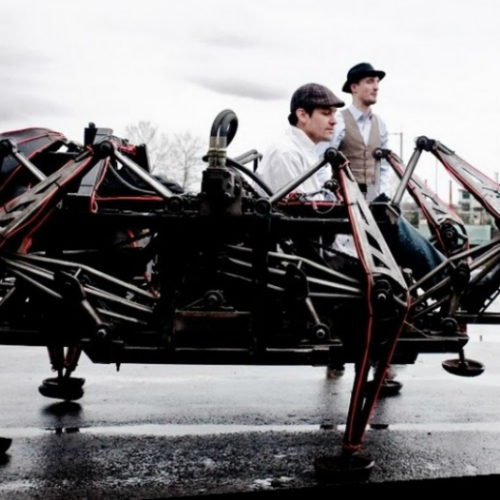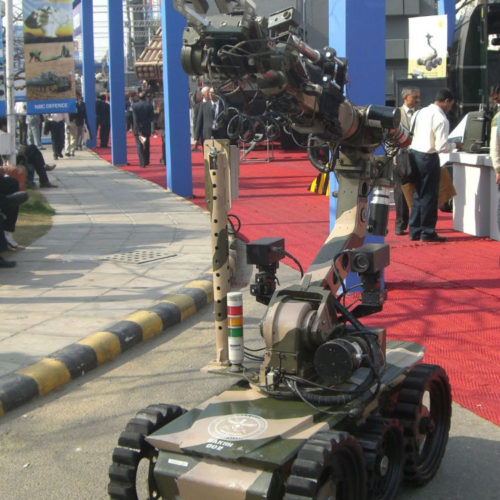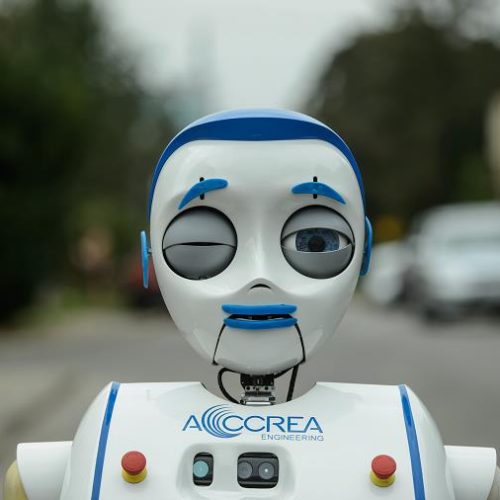The Latest Offerings From Festo
Festo are known for their robotic animals having previously developed a robotic dragonfly, kangaroo and penguin. This German electrical automation company have now unveiled their latest offerings, a robotic rolling spider and a robotic semi-autonomous bat.
BionicWheelBot
Looking a bit like something from a science fiction movie, the inspiration for the BionicWheelBot spider came from the flic-flac spider that lives on the edge of the Sahara Desert. This particular spider will walk along quite happily on rough terrain, but as soon as it reaches a smooth surface it starts to roll and somersault, moving much faster than when it is walking. It can also propel itself into the air, so can deal with whatever terrain the desert provides.
A professor, Ingo Rechenberg, from the Technical University of Berlin first discovered this spider in 2008 and has now worked with Festo’s bionic team to emulate its actions.
Remotely controlled, it has 15 motors and eight legs. Two of the legs are tucked up into its body when it is walking. When the time comes for it to roll, those six legs convert into two wheels and the legs that were previously folded away, extend to either side to push the rolled up robot along. It has onboard sensors that let it know when it is time to start moving again.
Just like the flic-flac spider, the BionicWheelBot can travel faster on its wheels than it can when walking.
BionicFlyingFox
This very lightweight robot was inspired by the fruit bat, and is made from foam and carbon fibre. Bats are one of the few mammals that can fly, and this is because of the fine elastic membrane that stretches over their extended bones.
Its wings, which can fold independently, are covered in a honeycombed, thin membrane, which is wafer thin, ultra light and very robust This is made up of two airtight films of a knitted elastane fabric, which are spot welded together in somewhere in the region of 45, 000 different points. The material never creases, even when the wings are folded. The honeycombing prevents small cracks from getting worse, which means the BionicFlyingFox can still fly even with minor damage to its wings. The total weight of the robot is only just over 20 ounces.
Although it needs human intervention to take off and land, once in flight an autopilot system takes over. This has two ground based infrared cameras that move automatically to follow the four active infrared LED’s located on the legs and wing tips of the robot.
The cameras send images to a motion tracking system on a computer, which acts like an air traffic controller for the robot. Based on the information it receives, the computer plans a flight path and transmits the commands to the robot. The BionicFlyingFox then calculates the movements to carry out those commands, using onboard electronics.
There is constant communication between the computer and the robot, allowing it to move around safely in confined spaces.
You might also like
The Mondo Spider
She’s a 1000kg mechanical spider (we’re told she’s the fastest walking machine on Earth, too). This ridable mechanical walking machine was designed by a team of artists and engineers as
DRDO Daksh
Daksh is an electrically powered and remotely controlled robot used for locating, handling and destroying hazardous objects safely. The primary function of this battery powered remotely controlled robot on wheels
IURO
IURO (Interactive Urban Robot) – Is a part of the EU-STREP project IURO (Interactive Urban Robot), supported by the 7th Framework Programme of the European Union, ICT Challenge 2 Cognitive



